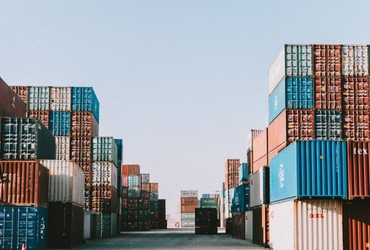
Shipping rates in 2019



The world’s two largest economies — the United States and China — play a massive role in each other’s trade movements and economies.
As the US’ largest import partner, China is responsible for nearly a quarter of all US imports. The US’ share of Chinese imports, while not as high, is still significant, with 8.7% of all Chinese imports hailing from the United States.
Both countries import a total of $610 billion worth of products from each other annually and are reliant on each other to maintain not only a healthy global economy but also their own.
Incidentally, it’s also these two countries that are currently waging a trade war against each other.
Effect of trade war
Over the past year or so, the US-to-China and China-to-US shipping rates and volumes have been somewhat dictated by a new economic reality that is the ongoing US-China trade war. The effects of their tit-for-tat tariffs have been felt by importers and exporters of both countries as they grapple with increased costs and tight supply chains in order to get a rush on their shipments and avoid tariff increases.
To date, the US has imposed tariffs on $550 billion worth of Chinese products, with China taking retaliatory measures on $185 billion worth of US goods.
Seasonality has also played a part in container rates, and even the upcoming IMO 2020 regulation has had a hand in how rates have fluctuated. But these aren’t the only factors at play.
The trade war tariffs have, in large part, played a regulatory — albeit unwitting — roles in the rise and fall of shipping rates. As the industry has witnessed, demand for space tends to increase around the time tariff announcements are made and usually last until just prior to the tariffs actually going into effect and the final sailings that would take the merchandise into destination in time before the increases.
“It’s not unusual to see rate fluctuations throughout the year as seasonal demands play into how the rates develop. But there have been more variables affecting the market than usual this year.”
— Klaus Lysdal, Vice President of Operations, iContainers
To understand the fluctuations in container shipping rates between the US and China, it’s important to keep in mind not only the contributing factors but also their context over the past year or so.
Here are the more noteworthy trade war tariff developments since September 2018.
Tariff announcements by China
- Sep 18, 2018: China announces 10% tariffs on $60 billion of US imports.
- Jun 01, 2019: China announces it will raise tariffs on $60 billion worth of US goods.
- Aug 23, 2019: China announces new rounds of retaliative tariffs on $75 billion worth of US goods, starting Sep 1, 2019.
- Sep 1, 2019: New round of retaliative tariffs on $75 billion worth of US goods takes effect.
Tariff announcements by the United States
- Sep 17, 2018: US announces 10% tariffs on $200 billion worth of Chinese goods to begin on Sep 24, 2018.
- May 5, 2019: US announces that 10% tariffs levied on $200 billion worth of Chinese goods would be raised to 25% on May 10.
- May 10, 2019: US raises tariffs on $200 billion Chinese goods from 10% to 25%.
- Aug 13, 2019: US delays tariffs on $112 billion worth of Chinese goods to Sep 1, 2019.
- Aug 23, 2019: US announces it will raise tariffs on the existing $250 billion worth of Chinese goods beginning on Oct 1, 2019 from 25% to 30%, and from 10% to 15% on the remaining $300 billion worth of goods beginning on Dec 15, 2019.
- Sep 1, 2019: US tariffs on $112 billion worth of Chinese goods take effect.
2019 peak season shipping rates
Undeniably, the US-China trade war developments have affected shipping in some form or another. Even the 2019 peak season saw relatively low activity, with the media labeling it a ‘bust’.
However, how much of that can be attributed to trade war movements is unclear. The industry has been dealing with high supply over the past few years so much so that it has become the standard today. Shipping peak seasons have also been pretty unpredictable and erratic compared to what the industry was used to years prior. Given that, what the industry has experienced this year falls within this new variance.
The changes in rates to reflect the start of the peak season have taken place right on cue this year. However, the evolution of shipping rates over the course of it has been different.
More specifically, it has been strangely stable. The fluctuations most expected to see was replaced with a lull. Rates over the past few months appear to have leveled off and have been lower than in previous years.
“Oddly enough, this year’s peak season wasn’t as ‘peak’ as most expected. The industry certainly has not seen the rate movements we’re used to seeing over the past few peak seasons.
But considering the outside forces that the market has been adjusting to, it certainly doesn’t come as completely out of the blue.”
— Klaus Lysdal
That said, peak season demand along the China-US transpacific route has so far been able to maintain relatively regular volumes compared to previous years and not fallen as drastically as the effects of tariffs could have had on them.
That’s mostly due to factors including the falling value of the Chinese currency and US importers switching to other Asian exporters to make up for lost Chinese sources.
West Coast vs East Coast volumes
Reports are also showing significantly different volume behaviors between West Coast-bound and East Coast-bound shipments.
There’s already been a notable shift in volumes to the East Coast over the past few years, with growth volumes of East Coast ports significantly outperforming that of their West Coast counterparts. And the trade war is further exacerbating volume woes along the west coast.
The transpacific trade lane, the more direct route between the US and China, remains relatively weak as a result of the trade war. According to Freightwaves, container traffic from Asia to the US West Coast in the first eight months of the year has fallen by 5.8%, while those to the East and Gulf coasts have risen nearly 7%.
“The shift of volume to the US East Coast will certainly play a part in these overall rates. Generally, US East Coast rates are down this year compared to last year but not nearly as much as rates to the West Coast.”
— Klaus Lysdal
How 2019 will come to a close
As it stands, rates are still much lower than they were a year ago. According to shipping consultancy Drewry, as of the end of October, spot rates from Shanghai to Los Angeles and New York are 47 percent and 28 percent lower than what they were a year ago exactly.
This was mostly due to higher than usual heavy movements last year as US importers hastened their shipments to beat the year-end tariff increases.
As we start to see out the rest of the year, there is still a chance that rates will rebound — the main driving force being the looming IMO 2020. With carriers removing four percent of the global fleet from rotation to adapt to the emission rules, the reduced capacity will keep supply closer to the actual market demand and allow rates to go up for the time being.
A second factor lies in the form of the earlier-than-usual Chinese New Year in 2020 which will spur importers to get their inventory out of China before the world’s largest exporter shuts down for the first of its two Golden Weeks.
That said, shipping rates can be expected to increase as 2019 comes to a close, but it will likely do so on a weaker note compared to 2018.
“All things considered, shipping rates tend to always ebb and flow with international trade and, as such, are often good indicators of how global trade and thereby international economies are performing.”
— Klaus Lysdal
Related Articles


